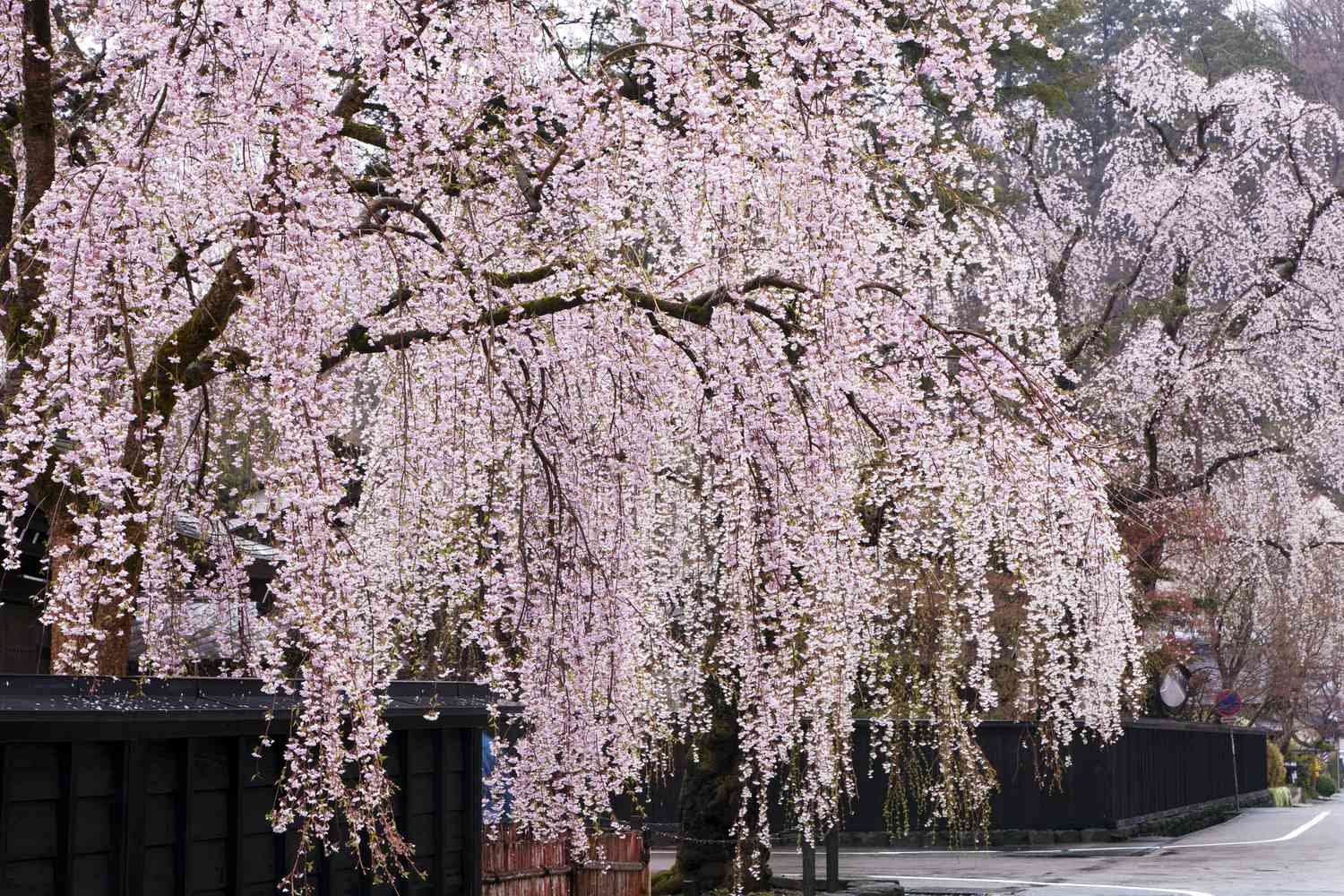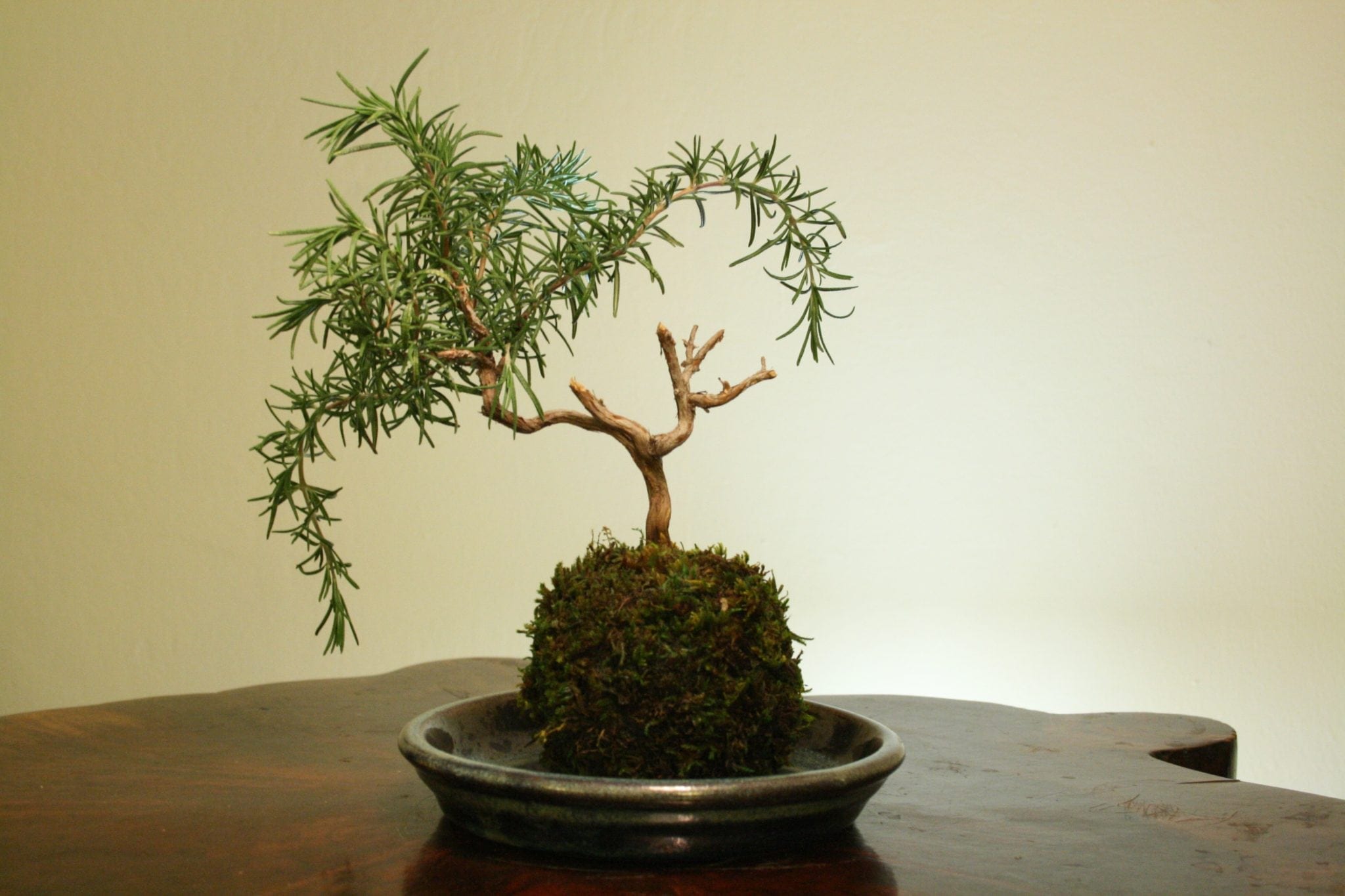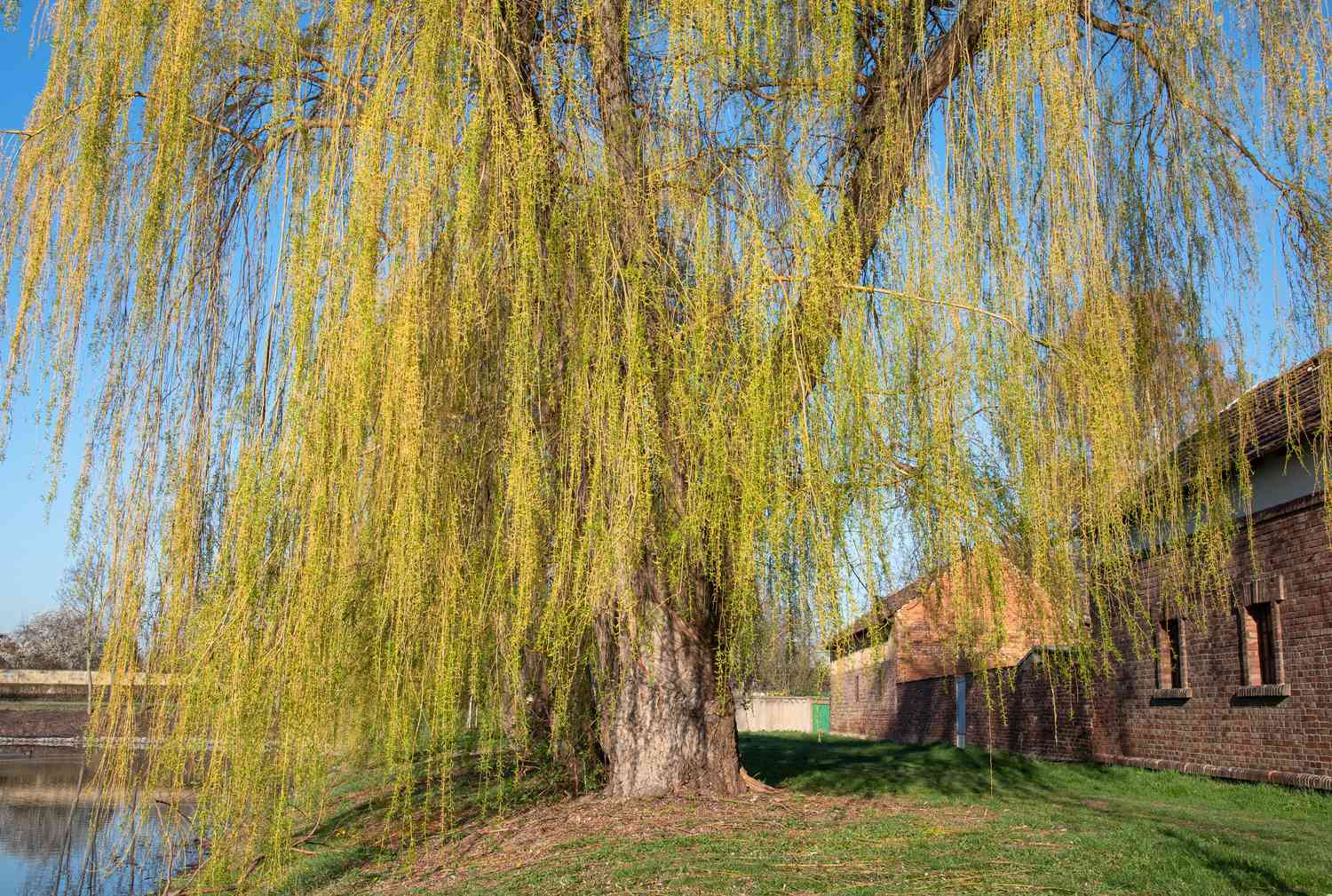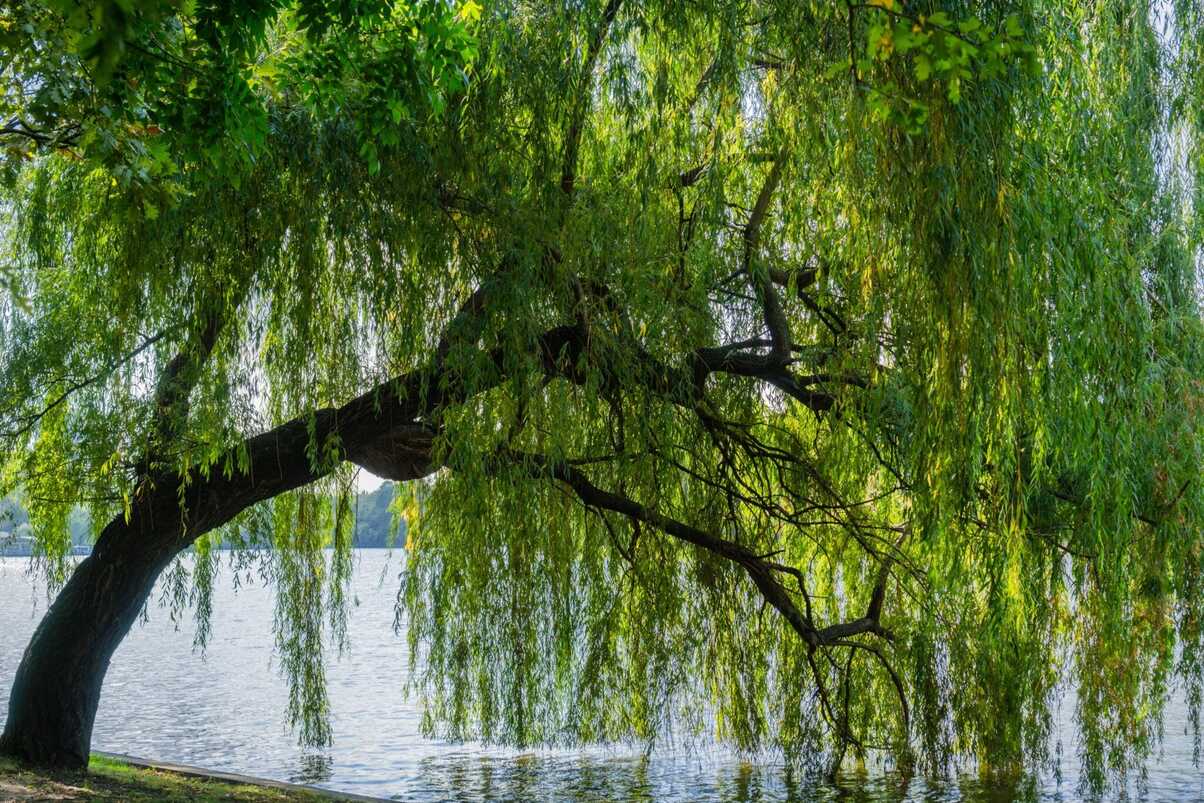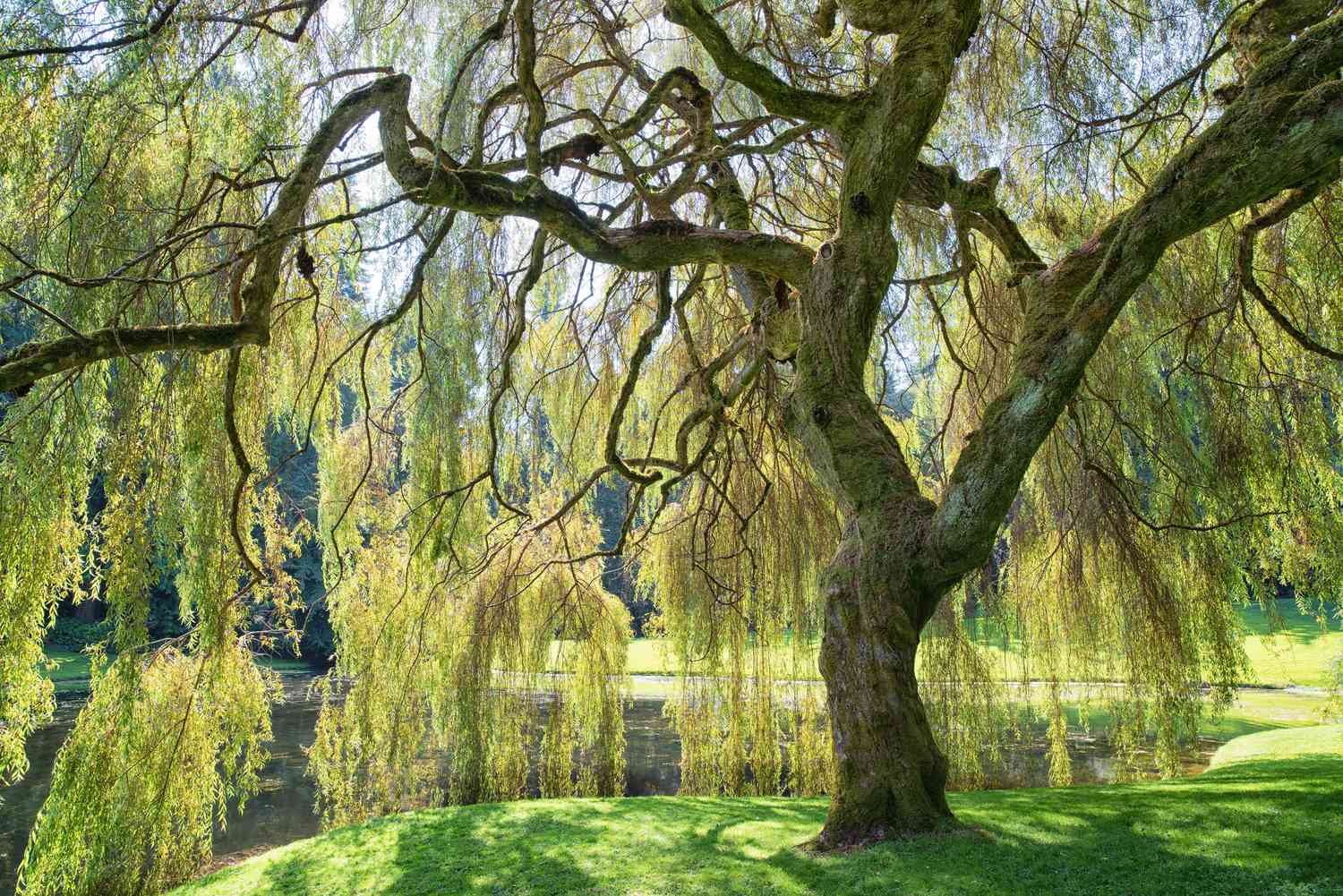Home>Gardening Techniques>DIY Projects>How To Make A Weeping Willow Bonsai Tree


DIY Projects
How To Make A Weeping Willow Bonsai Tree
Modified: January 22, 2024
Learn how to create your own weeping willow bonsai tree with this step-by-step DIY project. Transform your space into a serene oasis with our easy-to-follow guide.
(Many of the links in this article redirect to a specific reviewed product. Your purchase of these products through affiliate links helps to generate commission for Chicagolandgardening.com, at no extra cost. Learn more)
Table of Contents
Introduction
Welcome to the world of DIY projects! If you’re someone who appreciates the beauty of nature and the art of bonsai, then you’re in for a treat. In this article, we will explore the fascinating process of creating a weeping willow bonsai tree. With its graceful and cascading branches, the weeping willow is a popular choice among bonsai enthusiasts.
Creating a weeping willow bonsai tree is not only a rewarding and enjoyable project but also a great way to bring a touch of elegance and tranquility to your living space. With a little patience, creativity, and a deep understanding of bonsai techniques, you can transform a young willow tree into a magnificent miniature version that exudes beauty and sophistication.
Before we dive into the step-by-step process of making a weeping willow bonsai tree, it’s important to note that bonsai cultivation requires time, dedication, and attention to detail. It’s an art form that requires careful consideration of the tree’s growth, shaping, and overall health. But fear not, as we will guide you through each stage of the process, providing helpful tips and tricks along the way.
So, roll up your sleeves, grab your tools, and let’s embark on this exciting journey of creating a weeping willow bonsai tree that will bring joy and a sense of accomplishment to your life.
Choosing the Right Willow Tree
When it comes to creating a weeping willow bonsai tree, selecting the right tree is crucial. The ideal candidate for bonsai cultivation is a young willow tree that has a slender and flexible trunk. Here are some key factors to consider when choosing the right willow tree:
- Species: There are various species of willow trees, each with its own unique characteristics. Some popular choices for bonsai include the Chinese willow (Salix babylonica) and the weeping willow (Salix sepulcralis).
- Size: Look for a young willow tree that is around two to three feet in height. This size is ideal for shaping and training into a bonsai form.
- Trunk: The trunk of the tree should have a smooth texture and be relatively straight. Avoid trees with too many bends or twists, as it can make the shaping process more challenging.
- Branches: Look for a willow tree with well-spaced and balanced branches. Avoid trees with branches that are too crowded or growing in awkward directions.
- Health: Choose a willow tree that is healthy and free from any signs of disease or pests. Inspect the leaves and bark for any abnormalities.
Once you have found the perfect willow tree for your bonsai project, it’s time to move on to the next step: pruning and shaping.
Pruning and Shaping Techniques
Pruning and shaping are essential techniques in bonsai cultivation, and they play a crucial role in creating the desired form and appearance of your weeping willow bonsai tree. Here are the steps to follow:
- Identify the Leader: Start by identifying the leader, which is the main trunk of the tree. This will determine the direction and shape of your bonsai. Trim any side branches that compete with the leader’s growth.
- Establish the Basic Shape: Decide on the overall shape you want for your bonsai tree, such as a cascading or windswept form. Use wire to gently shape the branches and trunk, gradually bending them into the desired position. Be careful not to apply too much pressure, as it can damage the tree.
- Prune Excessive Growth: Regularly prune excessive growth to maintain the desired shape and prevent branches from becoming too dense. Trim branches that cross or rub against each other to avoid potential damage.
- Promote Ramification: To create a fuller appearance, encourage ramification by pruning the tips of branches. This will stimulate branching and result in a more abundant foliage.
- Monitor the Balance: As your weeping willow bonsai tree grows, it’s important to monitor its balance. Trim branches that are too heavy or unbalanced to maintain the overall harmony of the tree.
- Wire Techniques: If needed, use bonsai wire to guide the growth of branches and create elegant curves. Be careful not to wrap the wire too tightly to avoid damaging the tree’s delicate branches.
Remember, shaping and pruning your weeping willow bonsai tree is an ongoing process that requires patience and observation. Regular maintenance will ensure that your bonsai tree retains its desired form and continues to flourish.
Creating the Bonsai Pot
The bonsai pot plays a crucial role in showcasing the beauty and artistry of your weeping willow bonsai tree. Here are the steps to create a suitable bonsai pot:
- Select the Right Pot: Choose a pot that complements the size and aesthetics of your weeping willow bonsai tree. The pot should have proper drainage holes to prevent waterlogging.
- Prepare the Potting Mix: Create a well-draining potting mix by combining equal parts of bonsai soil, perlite, and organic compost. This mix will provide the necessary nutrients and drainage for your bonsai tree.
- Position the Tree: Place a layer of the potting mix at the bottom of the bonsai pot. Gently position your weeping willow bonsai tree in the center, ensuring that the trunk is slightly tilted for a more natural and dynamic look.
- Add the Potting Mix: Carefully fill the pot with the potting mix, ensuring that the roots are covered but leaving a small space at the top for watering. Lightly press down the soil to secure the tree in place.
- Style the Surface: Create a visually appealing surface by adding a layer of moss or small pebbles on top of the soil. This will give your bonsai pot a finished and polished appearance.
It’s important to note that as your weeping willow bonsai tree grows, you may need to re-pot it every few years to ensure its continued health and development. Re-potting allows for root pruning and the replenishment of fresh nutrients in the soil.
With your bonsai pot ready, it’s time to move on to the next step: planting the weeping willow into its new home.
Planting the Willow Tree
Planting your weeping willow tree in the bonsai pot is a crucial step that will provide a stable foundation for its growth. Follow these steps to ensure a successful planting process:
- Prepare the Pot: Start by soaking the bonsai pot in water for a few minutes. This will help to moisten the potting mix and create an ideal environment for the tree’s roots.
- Remove the Tree: Carefully remove the weeping willow bonsai tree from its current container by gently loosening the soil around the edges. Take care not to damage the roots.
- Inspect the Roots: Examine the roots of the tree and prune any long or damaged ones. This will encourage new root growth and prevent them from becoming tangled or overcrowded.
- Place the Tree: Position the weeping willow tree in the center of the bonsai pot, making sure that the roots are spread out evenly. Adjust the tree’s angle if desired.
- Backfill with Soil: Fill the pot with the prepared potting mix, carefully layering it around the roots. Gently press the soil down to secure the tree and remove any air pockets.
- Water Thoroughly: Give your newly planted weeping willow bonsai tree a thorough watering to ensure proper hydration. Water until you see the excess water draining out of the drainage holes.
Once the tree is planted, place it in a location that receives the right amount of sunlight and provides protection from extreme weather conditions. With proper care, your weeping willow bonsai tree will continue to thrive and bring beauty to its surroundings.
Caring for Your Weeping Willow Bonsai
Caring for your weeping willow bonsai is essential to ensure its health, growth, and longevity. Follow these guidelines to provide the best care for your bonsai tree:
- Watering: Proper watering is crucial for the well-being of your bonsai tree. Check the moisture level of the soil regularly and water when the top inch feels slightly dry. Avoid waterlogging or allowing the soil to completely dry out.
- Sunlight: Place your weeping willow bonsai tree in a location that receives partial to full sunlight. Willows thrive in bright light, but too much direct sunlight may cause leaf burn. Monitor the tree’s exposure and adjust accordingly.
- Fertilization: Regularly fertilize your bonsai tree to provide it with essential nutrients. Use a balanced bonsai fertilizer during the growing season, following the instructions on the package. Avoid over-fertilization, as it can harm the tree.
- Pruning: Continual pruning is necessary to maintain the shape and aesthetics of your weeping willow bonsai tree. Trim back new growth to maintain the desired size and shape, and remove any dead or damaged branches promptly.
- Wiring: If utilizing wiring techniques, regularly check the wire’s tension and adjust as needed. Be cautious not to leave wires on for extended periods to prevent wire scarring.
- Seasonal Care: Take into account the changing seasons when caring for your bonsai tree. Adjust watering and placement as needed to accommodate temperature fluctuations and seasonal growth patterns.
- Pest and Disease Control: Monitor your bonsai tree for any signs of pests or diseases, such as aphids or fungal infections. If detected, take appropriate measures to control and treat the issue promptly.
- Maintenance: Regularly inspect your weeping willow bonsai tree for any issues, such as root overcrowding or soil depletion. Re-potting may be necessary every two to three years to provide fresh soil and ensure the tree’s continued health.
By providing attentive care and staying attuned to your weeping willow bonsai tree’s needs, you can create a thriving and visually stunning miniature masterpiece that brings joy and tranquility to your space.
Troubleshooting Common Issues
While caring for your weeping willow bonsai tree, you may encounter a few common issues. Here are some troubleshooting tips to help you address these problems:
- Yellowing Leaves: If the leaves of your bonsai tree turn yellow, it may be a sign of overwatering, poor drainage, or nutrient deficiency. Adjust your watering practices and ensure proper drainage. Consider fertilizing with a balanced bonsai fertilizer to provide the necessary nutrients.
- Dry or Wilting Leaves: Dry or wilting leaves can indicate under-watering or exposure to excessive heat or sunlight. Check the moisture level of the soil and adjust your watering schedule accordingly. Provide shade or move the tree to a more suitable location if necessary.
- Pest Infestations: If you notice pests such as aphids, scale insects, or spider mites on your bonsai tree, take immediate action to control the infestation. Use organic pest control methods or consult a local bonsai expert for guidance.
- Root Crowding: Over time, the roots of your weeping willow bonsai tree may become overcrowded, inhibiting proper growth. If you observe significant root congestion, carefully repot the tree, pruning and untangling the roots as needed.
- Weak Growth: Weak growth can be a result of insufficient sunlight, inadequate fertilization, or improper watering. Ensure that your bonsai tree receives enough light, fertilize regularly, and adjust your watering practices to promote healthy growth.
- Wire Scarring: Leaving bonsai wire on for too long can cause wire scarring, where the wire digs into the branches and leaves marks. Regularly check the wired branches and remove the wire if it begins to dig in or before it leaves permanent scars.
Remember, bonsai cultivation requires patience and observation. By staying vigilant and addressing any issues promptly, you can keep your weeping willow bonsai tree healthy and vibrant.
Conclusion
Creating a weeping willow bonsai tree is a rewarding and fulfilling DIY project that allows you to showcase nature’s beauty in a miniature form. Through careful selection, pruning, shaping, and proper care, you can transform a young willow tree into a stunning bonsai masterpiece. Remember to choose the right willow tree species, master the pruning and shaping techniques, create a suitable bonsai pot, plant the tree with care, and provide diligent care on an ongoing basis.
Throughout this journey, it is essential to maintain a balance between the artistry of bonsai cultivation and the inherent growth patterns and needs of the weeping willow. By understanding the tree’s requirements, such as proper watering, sunlight exposure, fertilization, and vigilant pest control, you can ensure the health and vitality of your bonsai tree.
Keep in mind that every bonsai tree is unique and requires individual attention. Observe and adapt to the specific needs and growth patterns of your weeping willow bonsai tree, adjusting your care practices accordingly. Regular pruning and maintenance will help maintain the desired shape and form of your bonsai tree.
As you embark on this journey of creating and caring for your weeping willow bonsai tree, embrace the learning process and enjoy the remarkable beauty that emerges from it. Bonsai cultivation is not just a hobby but a lifelong journey of nurturing and appreciating the wonders of nature in a miniature form.
So, gather your tools, tap into your creativity, and embark on this wonderful journey of creating your very own weeping willow bonsai tree. It’s time to unleash your imagination and witness the magic of nature unfold in the palm of your hand.
